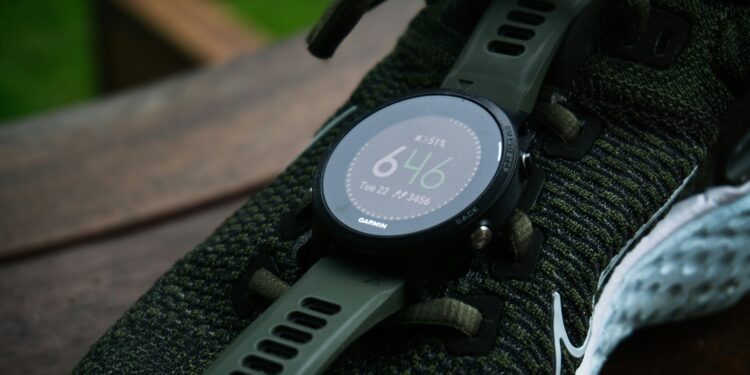The Data Athlete: How Wearables Are Shaping Modern Sports Training

Modern sports training isn’t just about grit, discipline, and repetitions anymore—it’s about data. From elite professionals to weekend warriors, athletes are turning to wearable technology to measure, analyse, and refine their performance with unprecedented precision. With devices like Whoop, Garmin, Oura, and even AI-powered coaching platforms, the era of the “data athlete” has arrived.
These tools offer more than just flashy metrics. They’re redefining what sports training looks like in the 21st century.
1. Recovery is Now a Metric, Not a Mystery
For decades, recovery was treated as a vague rest period between workouts. Today, wearables like the Whoop strap monitor heart rate variability (HRV), resting heart rate, and sleep quality to generate recovery scores. These real-time insights allow athletes to adjust training intensity based on physiological readiness, reducing the risk of overtraining and burnout.
By integrating recovery into the core of sports training, wearables enable a more holistic and sustainable approach to peak performance.
2. Sleep Science Meets Peak Performance
Sleep tracking has gone from novelty to necessity. Devices like the Oura Ring break down sleep into stages (light, deep, REM) and help athletes understand how quality rest affects their output. With sleep optimisation now part of the sports training equation, fitness tracking has extended beyond the gym and into the bedroom.
Professional athletes increasingly treat sleep as the “new frontier” of performance, and with good reason—consistent deep sleep has been linked to faster muscle recovery, improved reaction time, and better cognitive function.
3. Real-Time Training Feedback with Garmin & AI
Garmin smartwatches go beyond basic fitness tracking by offering VO2 max estimations, lactate threshold alerts, and real-time pacing recommendations. For endurance athletes in particular, this transforms every workout into a data-rich session.
Pair this with AI-based coaching tools (like AI runners’ apps or cycling trainers), and athletes now receive dynamic feedback during their training without the intervention of a coach. This fusion of wearable hardware and algorithmic guidance is redefining sports training at all levels.
4. Personalisation at Scale
One of the standout benefits of wearable-driven sports training is how personal it becomes. Instead of following cookie-cutter training plans, athletes can tailor every session based on biometric feedback. Whether it’s reducing volume after a poor night’s sleep or increasing load based on optimal readiness scores, wearables give athletes a blueprint unique to their physiology.
5. Injury Prevention Powered by Prediction
By continuously monitoring load, strain, and movement efficiency, wearables can help prevent injuries before they happen. Tools like Whoop and Garmin track cumulative strain and recovery balance, flagging red zones that suggest overuse.
Additionally, some systems use AI to detect micro-patterns that precede injury, empowering sports teams and individuals to proactively modify routines. This predictive layer is shifting sports training from reactive to preventive.
6. Motivation and Accountability, Gamified
Sports training can sometimes feel isolating, especially for solo athletes. Fitness tracking apps synced with wearables introduce leaderboard challenges, weekly goals, and progress visualisations that maintain engagement and motivation.
Whether you’re a runner comparing cadence data or a cyclist tracking watts per kilogram, wearables turn data into an ongoing challenge, making consistency more attainable.
7. Democratizing High-Performance Coaching
What used to be exclusive to Olympic-level athletes is now available to anyone with a smartphone. The affordability and accessibility of wearables mean that sports training has become more inclusive. Weekend warriors, student athletes, and working professionals now have access to insights once limited to high-tech labs.
This levelling of the playing field means more people can train smarter, not harder.
8. Mental Fitness: Cognitive Benefits of Wearable-Driven Sports Training
Beyond physical performance, wearables are helping athletes tap into the mental side of training. Devices that track stress levels (via heart rate variability), mood patterns, and even focus during workouts offer a holistic look at how athletes feel, not just how they perform.
For instance, Oura and Whoop provide readiness scores influenced by mental strain and sleep patterns, helping users spot emotional or psychological fatigue. Some AI-integrated platforms are also experimenting with biofeedback loops, guiding athletes through breathing exercises or meditative cooldowns based on stress signals.
By integrating mental wellness into sports training, wearables are evolving into full-spectrum performance tools. Athletes no longer have to guess when their mind needs a reset. Data will tell them.
The Data-Driven Athlete Is Here to Stay
Wearables have transformed sports training into a feedback loop: one where performance is constantly measured, interpreted, and optimised. From sleep and recovery to movement analytics and injury prevention, these tools give athletes the data they need to take control of their bodies and routines.
As AI advances and fitness tracking apps become more intelligent, the divide between amateur and pro-level training will continue to narrow. Whether you’re chasing a podium or your personal best, becoming a data athlete could be the smartest move you make.








